Welcome to my chaotic experiment –
Cultivating our sourdough starter
Day 5 (2/10/24) @ 0645 – Still no rise 🙁
AHHH! On day 5 we had started to become disheartened by our x2 lack of rises in Elsabet. At this point, we started to find troubleshooting solutions.
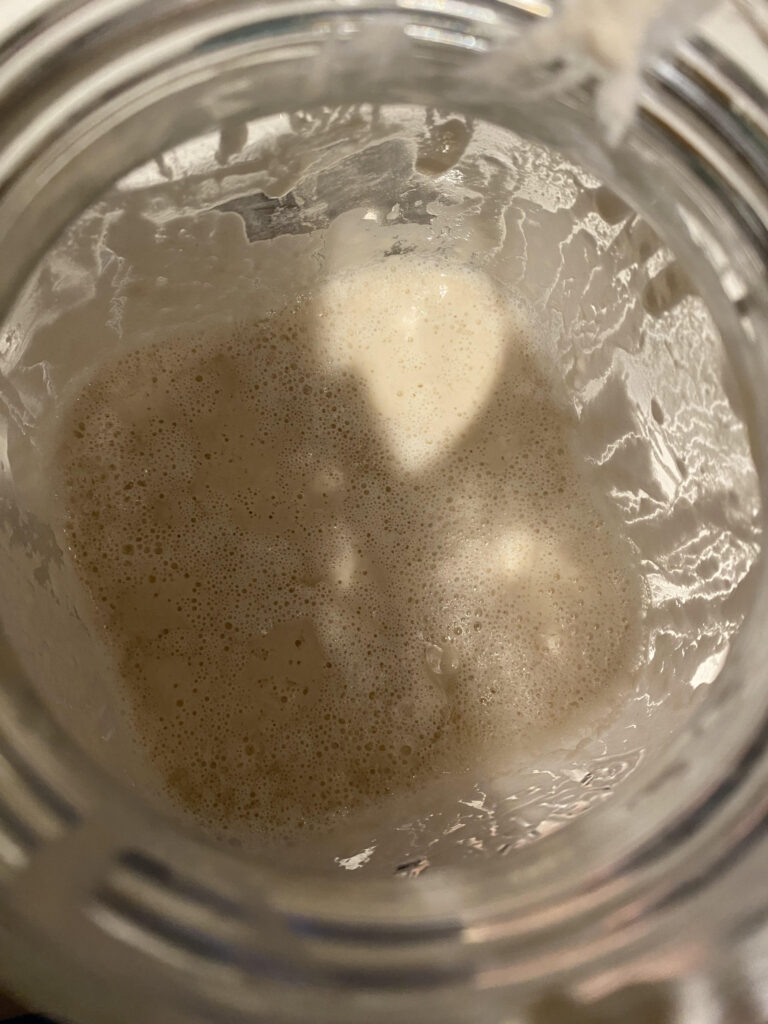
A few of the recommendations from sourdough folks included:
- Mixing in bottled water – Apparently some of the added minerals and chlorination of city water can mitigate our good bacteria formation which can limit our starter’s development.
- Mix in some whole wheat flour – Whole wheat flour is said to have higher protein content which can help to support yeast and bacteria growth.
- Use the correct sized jar – Having shifted our starter to a much larger container and continuing to discard ½ of the starter may have decreased our yeast/bacteria density.
- Your house is too cold – Goal temp, from what we can discern, is between 68-80 degrees. Our home has consistently between these temperatures but we do put the AC to 69 degrees at night (our apartment likes to stay warm despite our AC/heat being off) so night time temp could be at play?
- The number one tip that we were given was to let the starter be for a bit longer. We were recommended to let her ferment until 36 hours and see if she had a rise. Elsabeth did not, so at this point, our directions were to discard, feed, and try another day.
After allowing our starter to ferment for 36 hours and having no rise, we discarded half and added ½ cup of flour and ½ cup of warm water.
Average House Temp: 70 degrees Fahrenheit
Flour: 1/2 cup of unbleached flour
Water: 1/2 cup of warm tap water
Day 6 (2/11/2024) @ 0645
After rather disappointing days prior, day 6 continued the trend of no rises. Despite our lack of progress, we continued to have evidence of CO2 put off from our yeast and bacteria cultures. No concerning pink or tan streaks have developed, and the scent is yeasty.
Today we elected to make some big changes. Whilst I was at work, my lab assistant was enlisted in dividing half of Elsabet into a smaller jar, henceforth to be known as Elsabeth 1, with hopes of the more concentrated bacteria/yeast ratios resulting in further development of our starter. He elected to feed the new jar an equal ½ cup of whole wheat flour and ½ of warm water. We will see if the higher protein content makes any difference!
The last half of Elsabet, Elsabet 2, was left in the large jar and fed ½ cup of unbleached bread flour and ½ warm water to see if there will be any development.
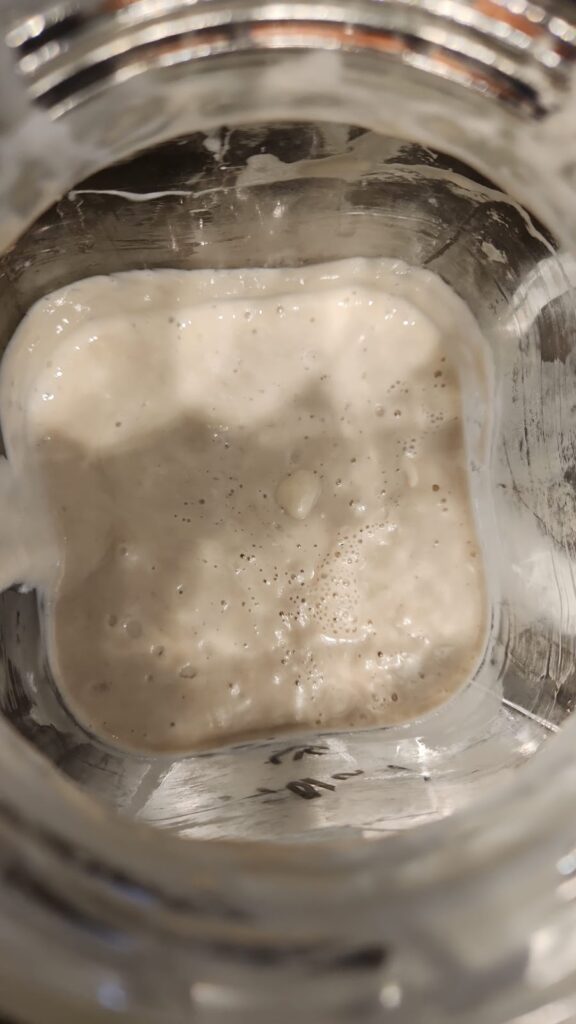

Average House Temp: 71 degrees Fahrenheit
Flour: 1/2 cup unbleached bread flour
Water: 1/2 cup of warm tap water
Day 7 (2/12/2024) @ 1200 – Upgraded sourdough supplies!
On day 7 there may have been a bit of rise! But after over 24 hours of insignificant progress we elected to make some further changes. In short, I wanted to use the big pretty jar for other purposes so Elsabet 2 had to find a new home. At this point, we are going to minimize jar transfer as much as possible.
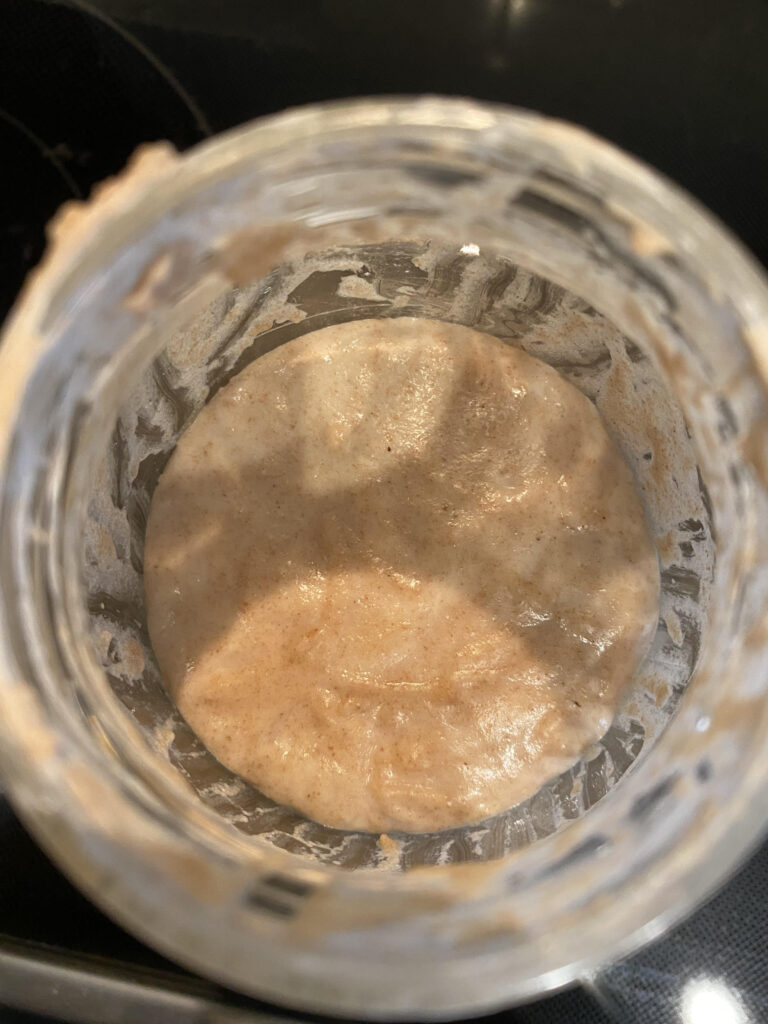
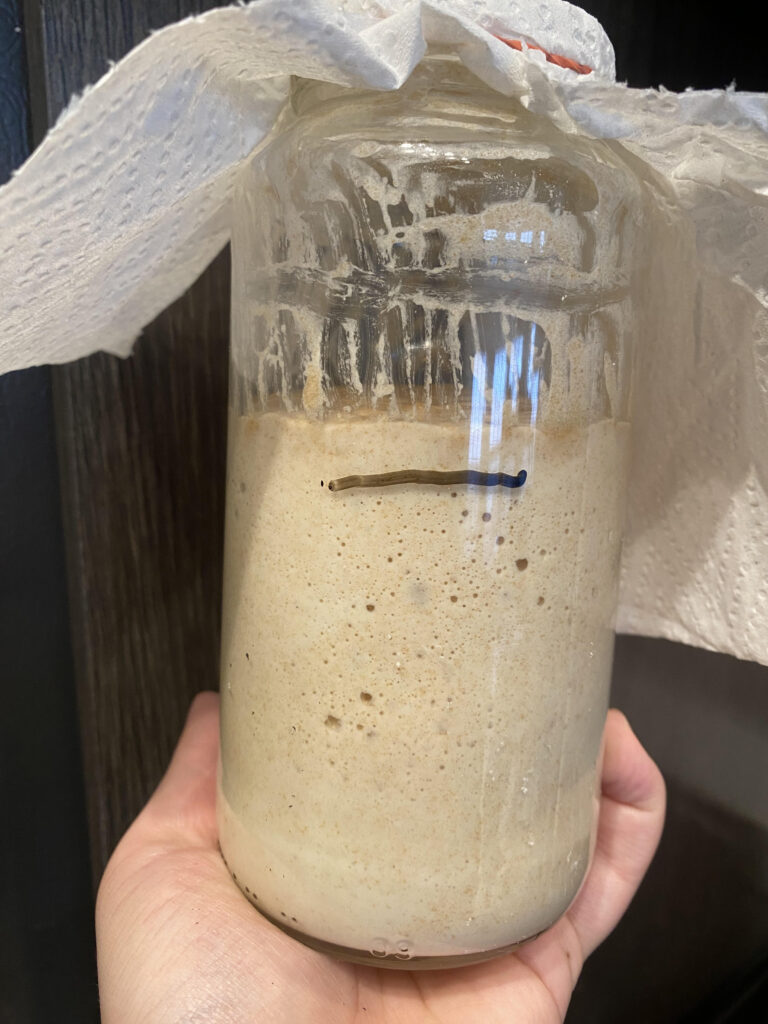
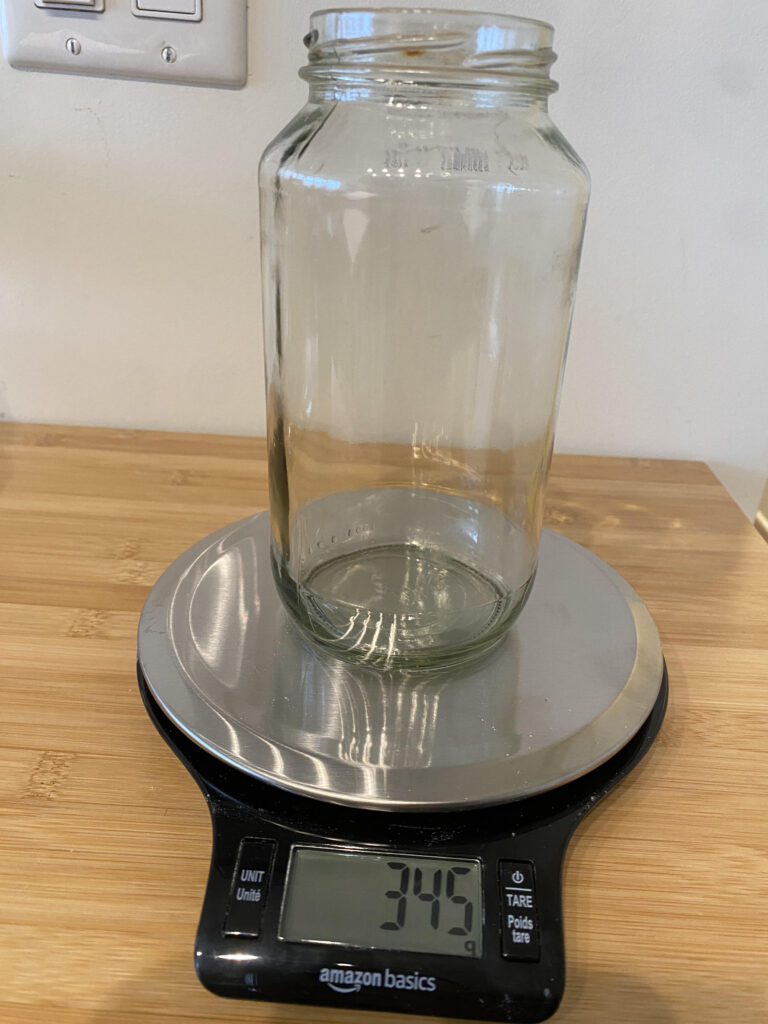
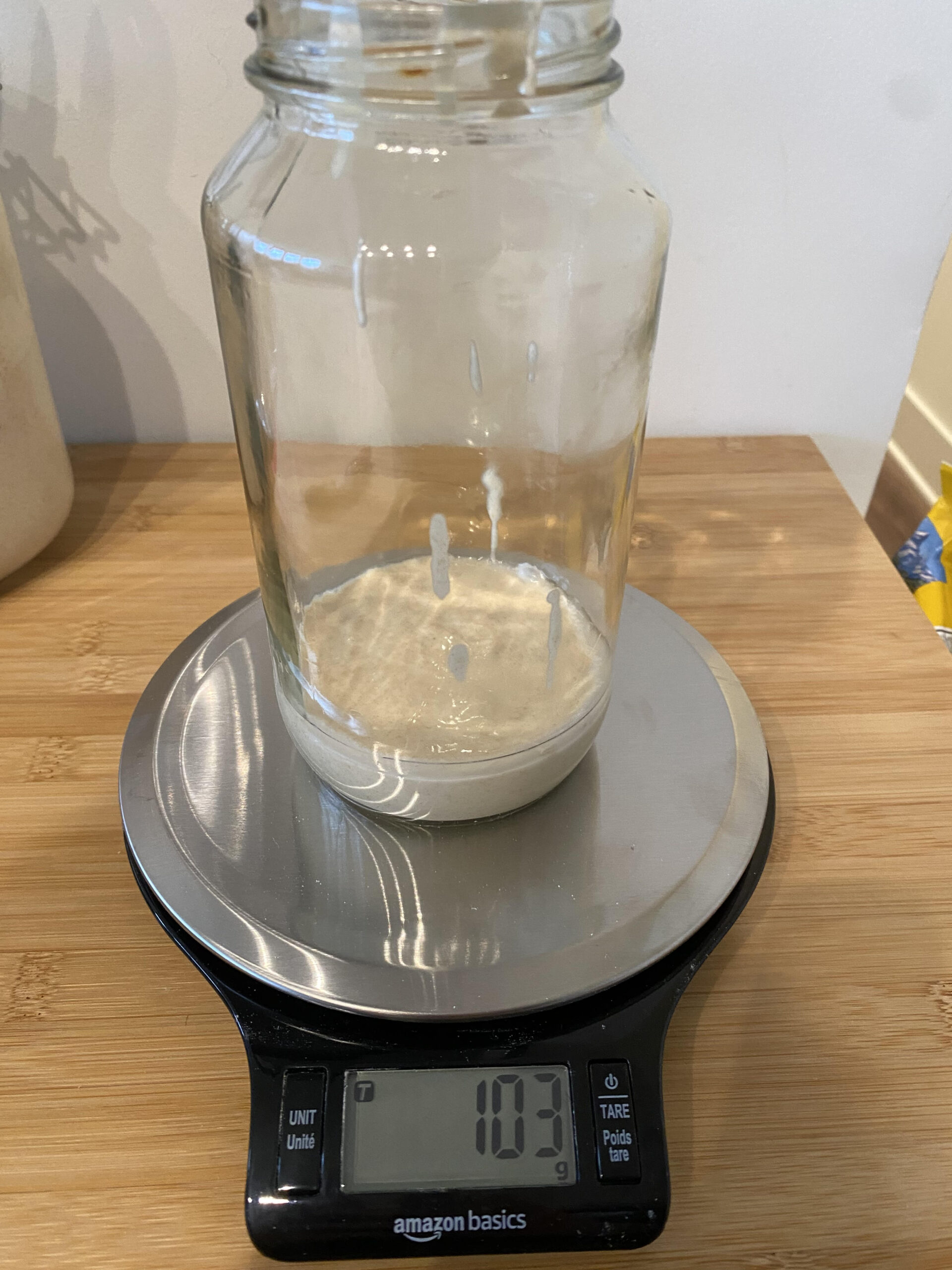
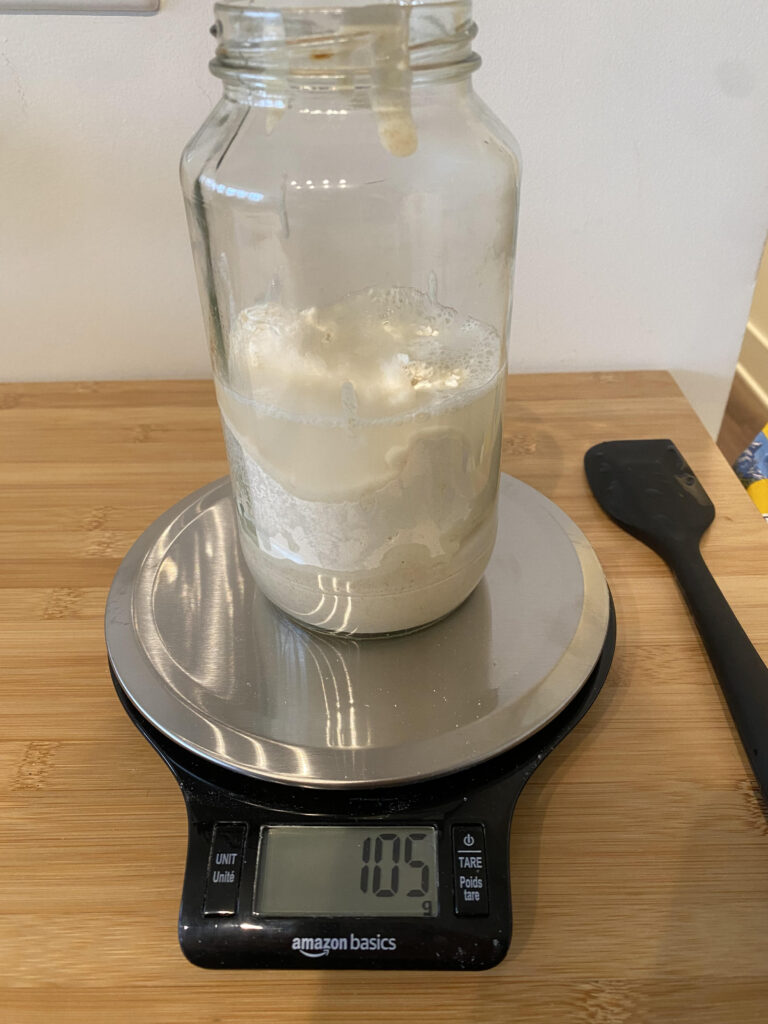
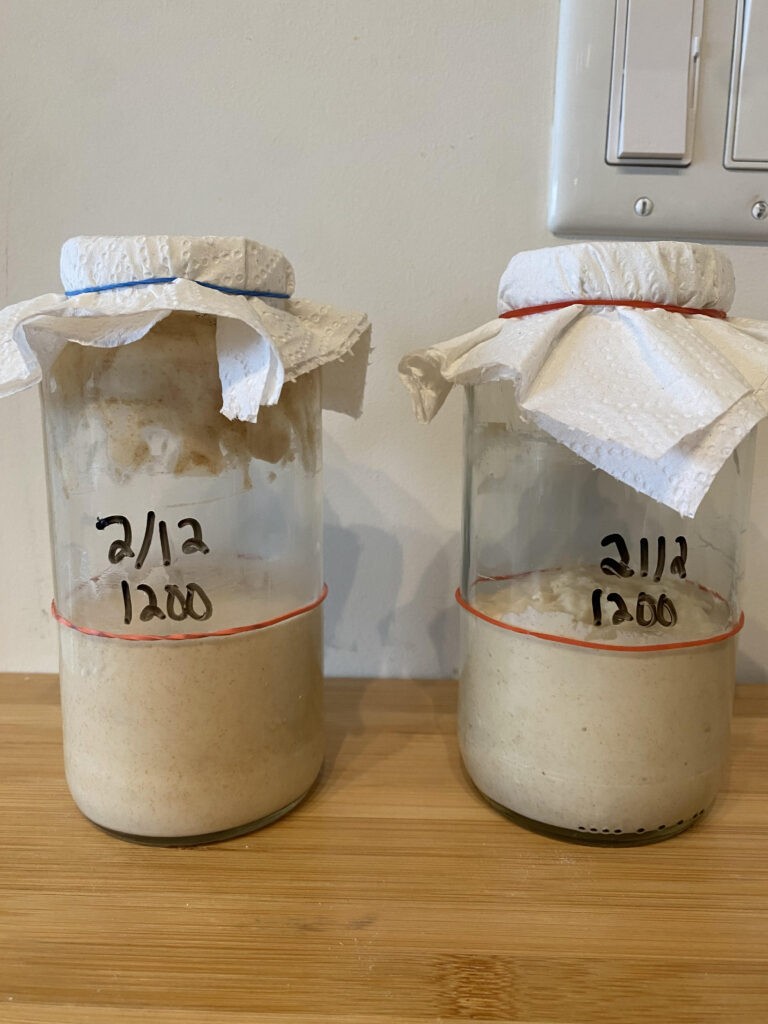
Elsabet 1 did have about ½ inch of rise and fall after her transfer to the new jar. After the starter was allowed to fall back to near baseline, I used our new food scale to precisely measure the amount of flour/water that the starters are being fed. Elsabeth 1 was discarded to 50 g of starter, and was fed 50 g of unbleached bread flour and 50g of warm tap water.
Elsabet 2 was going to be rehomed today. I took our OG jar, cleaned it of all of the leftover labeling, and measured and zeroed our scale. 103 g of starter was added to the jar and zeroed again. I used as close to 1:1:1 ratio that I could get with 103 g of wheat unbleached bread flour and 105 g of water at 100 degrees fahrenheit (I accidentally over poured).
At this feed, I began to boil tap water on the stove top and allowed it to cool to 100 degrees fahrenheit before adding it into the water. This is an effort to ensure that our starter is getting a safe temperature of water to speed up the fermentation process rather than straight from the tap, which we do not know the temperature.
The consistencies of the starters were very different with these feeds. Elsabet 1 was more liquidy while Elsabet 2 was much denser.
Our starters will be allowed to rest at room temp until tomorrow morning!
Average House Temp: 72 degrees Fahrenheit
Flour: E1 received 50 g, E2 received 103 g of unbleached bread flour
Water: E1 received 50 g, E2 received 105 g at 100 degrees Fahrenheit
